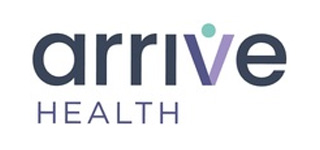SAN FRANCISCO, and IRVINE, Calif., March 14, 2019 /PRNewswire/ — Ivantis Inc., developer of the novel Hydrus®Microstent, a device designed to lower eye pressure for open-angle glaucoma patients, announced today the 24-month results of the COMPARE study for minimally invasive glaucoma surgery (MIGS). Results from the study will be presented by Thomas Samuelson, MD, President of the American Society of Cataract and Refractive Surgeons (ASCRS), during the American Glaucoma Society (AGS) annual meeting in San Francisco, CA on March 14th at 12:53 EDT.
COMPARE is the first prospective, multi-center, randomized trial comparing two MIGS devices, the Hydrus Microstent versus two large-diameter iStent® Trabecular Micro-Bypass Stents (Glaukos Corp.), for the treatment of open-angle glaucoma in a standalone procedure. The trial included 152 patients with mild to late-moderate stage disease and was conducted at 12 centers in nine countries outside of the US. It was designed to compare the safety and effectiveness of both devices in lowering intraocular pressure (IOP) and reducing eye-drop medication. The comparative trial involved experienced MIGS surgeons who were beyond their surgical learning curves for both devices. The trial was designed to be a pure head-to-head comparison of devices without the confounding effect of cataract surgery, which has also been shown to lower IOP.
Iqbal “Ike” Ahmed, MD, distinguished Binkhorst medal recipient and lecturer on the topic of MIGS, and a Scientific Advisory Board member for both technologies studied in COMPARE, served as medical monitor for the trial.
The 24-month results showed the following:
- Two times the number of patients in the Hydrus Microstent group were medication free compared to the two-iStent group (38.0 percent versus 18.7 percent).
- Medication use was reduced on average by 1.3 medications, or 52 percent, in the Hydrus Microstent group, compared to a reduction of 0.8, or 29 percent, in the two-iStent group.
- None of the eyes in the Hydrus Microstent group required a reoperation to control glaucoma, compared to 9 percent in the two-iStent group.
- 63 percent of patients receiving the Hydrus Microstent achieved at least a 20 percent reduction in IOP while on fewer medications, compared to 40 percent of the two-iStent patients.
- Both groups showed general stability in terms of medication reduction and IOP relative to the previously presented 12 month results.
According to Dr. Douglas J. Rhee, Professor of Ophthalmology and Chair of the Department of Ophthalmology and Visual Sciences at University Hospitals / Case Western Reserve University School of Medicine, and Chair of the Glaucoma Clinical Committee for ASCRS, and a participant in the trial, “The results from the COMPARE Trial correlate closely with what we have previously observed in our laboratory and others on the various trabecular bypass devices. We showed that there is clearly an advantage to the Hydrus implant, which both bypasses and scaffolds the canal, allowing access to a greater portion of the natural collector channel system, as opposed to either single or dual micro-bypass only. I congratulate all the other investigators and Ivantis for conducting such a rigorous study.”
Dr. Samuelson commented, “The clinical community will be pleased to see 24-month results for the first controlled ‘head-to-head’ trial in the MIGS space, and there are some important and practical takeaways here. First, although this is a controlled trial, it is quite ‘real world’ in the sense that the surgeons were trained experts in both technologies and the population included a wide range of disease severity. Second, we know cataract surgery alone is effective at reducing IOP, and, while the predominant application of MIGS today is in conjunction with cataract surgery, the results of this trial allows us great optimism for the role of these technologies as ‘standalone’ procedures. Third, while not a prespecified endpoint, a critical finding was a statistically significant difference in secondary surgical interventions at 2 years in favor of Hydrus. Ultimately, the goal of all MIGS – and all glaucoma therapy in general – is to stop progression of disease. While both devices had overall benefit for the patient, on this metric, Hydrus as a stand-alone procedure was excellent. This data set is an important contribution to our overall understanding of the role of MIGS devices in our armamentarium.”
“We are extremely pleased with these 2 year results,” said Dave Van Meter, President and CEO of Ivantis. “These results illustrate the clinical advantages of the Hydrus and its unique, proprietary Tri-Modal™ mechanism of action relative to focal trabecular bypass. Clearly, scaffolding the canal has unique benefit. Of the over 100 peer reviewed publications in the MIGS space, there are only a small handful of prospective, multicenter randomized trials, and Ivantis has conducted nearly half of those, which is a significant achievement for a company that is the most recent to commercialize in the MIGS category. We are proud to sponsor clinical trials of this caliber, enabling the COMPARE investigators to advance our understanding of the Hydrus Microstent and the MIGS field overall, and we look forward to the publication of these important 2 year results. We are grateful to the investigators for their support and contributions.”



